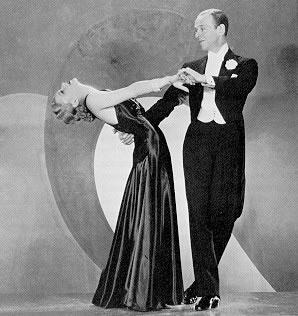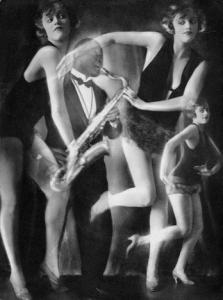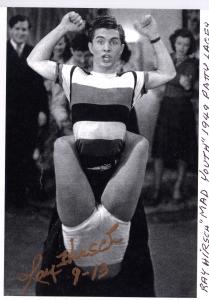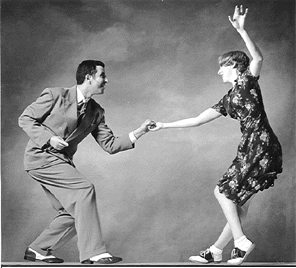Be Awesome or Sit Down: Musings on Our Spectator Culture
 A friend posted an article on Facebook a while back that lamented the serious decline in singing in American churches. The gist of it was not that American churches had succumbed to the teachings of some harsh, pious, music-hating sect - there was still plenty of music, but it wasn't the congregation providing it. They hadn't been told not to sing, quite the contrary, but the ones leading the music were very proficient well-amplified musicians performing complex music, with frequent new pieces to keep it "fresh" and demonstrate their musical chops. The poor congregations, so it would appear, just can't keep up.
A friend posted an article on Facebook a while back that lamented the serious decline in singing in American churches. The gist of it was not that American churches had succumbed to the teachings of some harsh, pious, music-hating sect - there was still plenty of music, but it wasn't the congregation providing it. They hadn't been told not to sing, quite the contrary, but the ones leading the music were very proficient well-amplified musicians performing complex music, with frequent new pieces to keep it "fresh" and demonstrate their musical chops. The poor congregations, so it would appear, just can't keep up.
The days of old Father Tom, in his creaky baritone, accompanied by an equally creaky organ, leading the flock in the umpteenth rendition of the Doxology appear to be largely passed in many congregations.
Their "joyful noise" doesn't need a bunch of untutored parishioners to be awesome.
This is not limited to church. In fact, adults don't sing in company anymore, outside the occasional binge of booze-enhanced Karaoke - unless they are pretty darn good.
Shimmie Dancing is Prohibited
A scandalous roaring 20s 2-Step. Small steps, close embrace, lots of body wiggle. You can clearly see the origins of Shag and Balboa in this.
Swing Dance in the LA Area
Here is a listing of most of the highlights of the Swing scene in the Los Angeles area. Most of it is courtesy of Chris Gauntt. This covers frequent events, and not annual things like the Avalon Ball. I will add to it and edit based on comments and suggestions I receive.
Cicada Club
Downtown Los Angeles. A recurring but not consistently scheduled event in a beautiful Art Deco nightclub, featuring different live bands with themes ranging from Roaring '20s to Latin, to '40s Swing to 1960s big band. Check their calendar for the next show.
http://www.cicadaclub.com/main.asp
Waltz in the Jazz Age
A video pastiche of Waltzing in the 1920s and 30s.
2. Mid 1920s - The Charleston Era
 Emerging around 1923, the Charleston was a ground-breaking dance in its time. It was enthusiastically embraced by the youth of the Jazz Age, who found in it an outlet for their desire for novelty, exuberance and a total break with the social constraints of the past. It was also revolutionary in its strong solo elements, where a dancer would perform without a partner, or physically separated from a partner, in a way that was quite a revelation for the white dancers of the early 20th Century.
Emerging around 1923, the Charleston was a ground-breaking dance in its time. It was enthusiastically embraced by the youth of the Jazz Age, who found in it an outlet for their desire for novelty, exuberance and a total break with the social constraints of the past. It was also revolutionary in its strong solo elements, where a dancer would perform without a partner, or physically separated from a partner, in a way that was quite a revelation for the white dancers of the early 20th Century.
In the heady days of the Roaring '20s, it even made occasional forays into the dancing of adventurous minded adults in a way that later youth dances did not. In 1926, you might have seen a 35 year old succumbing to an occasional fit of Charleston. In 1936, was far less likely you would have seen a 35 year old dancing a Lindy Hop.
There are a few widespread notions about the Charleston that I hope you can, if you happen to entertain these notions, set aside while reading this.
Charleston Misconceptions
- Charleston was the dominant dance of the Jazz Age
- The Charleston was nearly always danced solo or with a couple doing individual solos in the vicinity of one another
- The Charleston was defined by a small set of specific steps. If you didn't do those steps, you weren't doing a Charleston
2. Youth Dancing in the Jazz Age
 I present here a quick timeline, via some films I have come across in my travels that illustrate the sorts of dances that were popular with the young'ns in the '10s, '20s and '30s. Most adults gave these up when they reached 25 or so, leaving the kicks and twirling skirts in favor of something a bit more sophisticated; but while they were young, those kids of the Jazz Age really knew how to cut a rug.
I present here a quick timeline, via some films I have come across in my travels that illustrate the sorts of dances that were popular with the young'ns in the '10s, '20s and '30s. Most adults gave these up when they reached 25 or so, leaving the kicks and twirling skirts in favor of something a bit more sophisticated; but while they were young, those kids of the Jazz Age really knew how to cut a rug.
The thing that most distinguished "Youth Dances" from "Adult Dances", other than their relative athleticism, was not some fine point of technique or special step, it was the spirit of showing off. Adult dances were very pointedly not about showmanship. They were partner focused, and adult dancers almost never separated to do underarm turns or other showy moves. Kids on the other hand, were all about the showy moves, all about "Hey, look at me!". An adult dance was focused on the partner. A youth dance on the audience of peers.
The connections between these dances are pretty clear, as they progressed in a parallel track with the more mainstream Foxtrot and other ballroom dances. In fact, I would assert that they are all really just different flavors the same dance. "Youth Dance" happened when kids started inventing energetic, showy moves and wiggling their bodies to jazzy music. The specific combinations of moves and style of wiggling evolved over time, but there really are no clean breaks, just a gradual evolution with new moves being added to the mix and old moves falling out of fashion. We have some convenient reference points we might call "Charleston" or "Collegiate" or "Shag" which are helpful today but, at the chaotic time of their invention, lacked the clear definitions, precise terminology and sense of orthodoxy we moderns so often want to impose on the dances of the past.
I will hit on just a few clear reference points that give a sense of the flow. This collection is nothing like comprehensive - and never could be since only a tiny fraction of what the kids of the Jazz Age were inventing ever found its way to film. Further, the vagaries of copyright limit what I can post here. I present these films with a minimum of commentary, and will mostly let them speak for themselves.
The Fox Trot in the Jazz Age
An overview of the Foxtrot in the Jazz Age (1920s-1930s) showing its infinite adaptability. All footage is from the era. While dance teachers of the time liked to make distinctions, music publishers, bandleaders and dancers lumped almost any dance in 4/4 or even 2/4 time under the title "Fox Trot" unless it was obviously a Tango.


